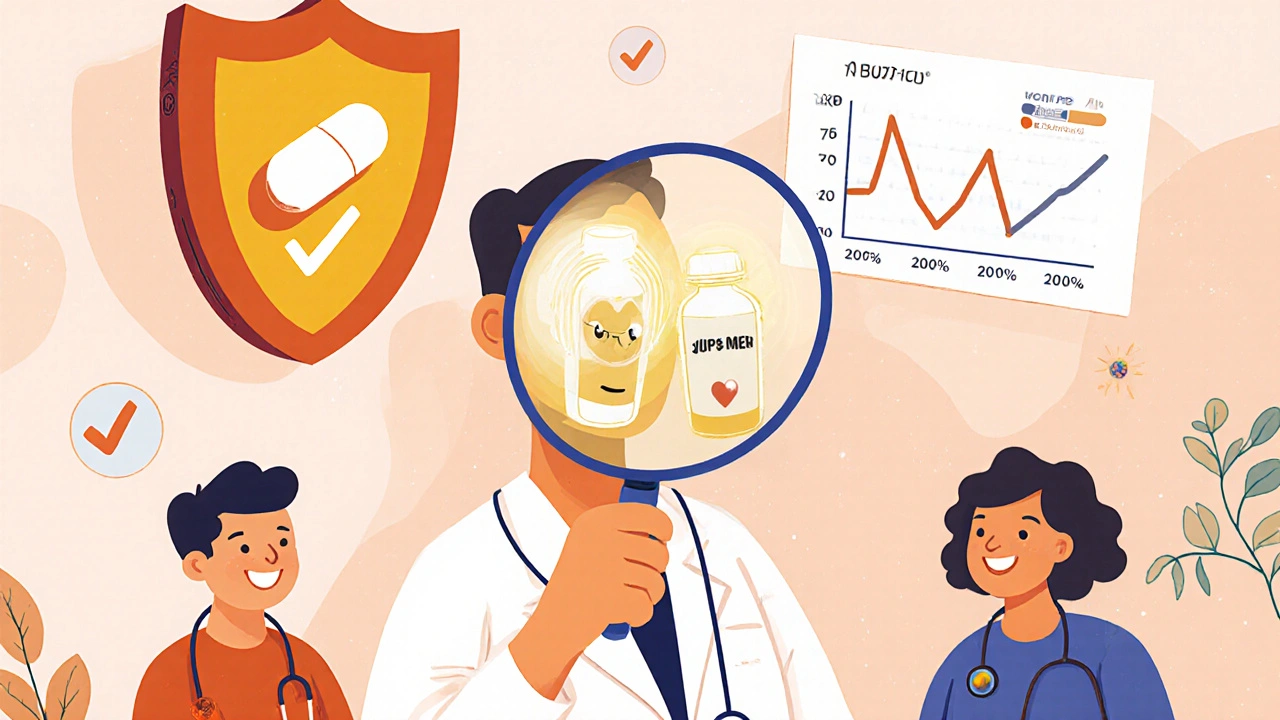Bioequivalence: What It Means for Generic Drugs and Your Health
When you pick up a generic pill, you want to know it does the same job as the brand-name version. That’s where bioequivalence, the scientific standard that proves two drug formulations release the same amount of active ingredient into the bloodstream at the same rate. Also known as therapeutic equivalence, it’s the reason your pharmacist can swap your prescription without your doctor’s approval. Without bioequivalence, generics could be weaker, slower to work, or even unsafe—something the FDA doesn’t allow.
It’s not just about the active ingredient. The way a pill breaks down in your gut, how fast it enters your blood, and how long it stays there—all these matter. A generic drug must match the brand-name version in drug absorption, how quickly and completely the body takes in the medicine, within strict limits. For example, if the brand-name drug delivers 100% of its dose over 4 hours, the generic can’t be under 80% or over 125% of that. This isn’t guesswork—it’s measured in clinical studies with real people, using blood tests to track drug levels. The FDA requires this for every generic approved since the 1980s, and it’s why millions of Americans trust generics every day.
But bioequivalence doesn’t just protect your health—it saves money. When a generic proves bioequivalence, it can enter the market without repeating expensive clinical trials. That’s why a 30-day supply of generic lisinopril might cost $4 instead of $150 for the brand. And when multiple generics hit the market, prices drop even further. But here’s the catch: not all generics are created equal. Some manufacturers cut corners on fillers or coatings, which can affect how the drug dissolves. That’s why the FDA monitors production facilities, checks cleanroom standards, and tracks reports of side effects. If a batch fails bioequivalence after approval, it gets pulled.
And it’s not just pills. Bioequivalence applies to inhalers, patches, even injectables. If you’re on insulin, asthma meds, or testosterone gel, the same rules apply. That’s why switching from one generic to another—even if they’re both labeled the same—can sometimes cause changes in how you feel. It’s not always the drug. It’s how your body reacts to the slight differences in how it’s made.
So when you see "bioequivalent" on a label, it’s not marketing fluff. It’s science. It’s regulation. It’s the reason you can afford your meds. And in a system where drug prices are hidden behind middlemen and formulary games, bioequivalence is one of the few things you can actually count on.
Below, you’ll find real-world breakdowns of how bioequivalence affects everything from seizure meds to ED treatments, antibiotic choices, and insulin switches. No theory. No jargon. Just what works, what doesn’t, and what you need to know before your next refill.
Medical Education on Generics: Do Doctors Learn Equivalence?
Despite generics making up 90% of prescriptions, many doctors lack training on bioequivalence. Learn why medical education fails to build trust in generic drugs - and what’s being done to fix it.
View More
